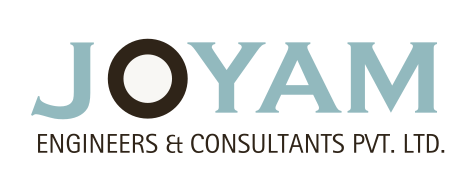What is vacuum? The word derives from Latin vacuus, meaning empty. Vacuum systems are surrounded by the earth’s atmosphere. To create vacuum, it is necessary to pump air out of a system.
The internationally accepted unit of vacuum measurement is the Torr.

A steam jet ejector is a device that uses high-pressure steam to create a vacuum by entraining and compressing gases or vapors from a process. It is commonly used in various industrial applications for tasks such as removing unwanted gases, creating a vacuum in a process vessel, or enhancing the performance of other equipment.
The primary advantage of steam jet ejectors is their simplicity, reliability, and the fact that they don’t have moving parts, making them suitable for handling corrosive or abrasive materials. They are commonly used in applications such as vacuum distillation, vacuum drying, and various chemical processes where a vacuum needs to be created.
It’s important to note that the efficiency of steam jet ejectors depends on factors such as steam pressure, design parameters, and the specific requirements of the application.
The Steam Jet Ejector consists of three basic parts: Steam nozzle, Suction Chamber and Diffuser. Steam enters the motive steam nozzle from the steam chest. The nozzle extension is used to establish the position of the motive steam nozzle relative to the diffuser inlet. High pressure motive steam expands across a converging-diverging nozzle and is thus accelerated to a supersonic velocity.
The high velocity motive stream entrain the mixture is accomplished across the diffuser by conversion of velocity to pressure head. This is converted to velocity head in the motive steam nozzle, velocity heads is converted to pressure head in diffuser.
Steam Jet Ejector offer an economical means producing vacuum. It has no any moving parts, simple operation.
Ejector construction:
The ease of Steam Jet Ejector design permits fabrication from any welded material i.e. Carbon Steel, Stainless Steel, Hastelloy, Titanium, Graphite construction etc.,
No of Stages:
Single Stage Ejector creates vacuum from atmospheric to 75 mm Hg A based on provided steam pressure. Higher vacuum more than 1 mm Hg A, may be achieved by multistage ejector. Multi stage ejector require either Barometric or Indirect type condensers. Condenser is require to reduce steam under certain conditions, recover condensate.
Ejector can handle process gases i.e. air, water vapour, SO2, Hexane, Toluene, EG and many other organic & inorganic vapours.
We “Joyam” supplies complete packages which includes ejectors, condensers, piping, valves, skid etc.,
Following types of Vacuum Systems we “Joyam” are regular supply:
- Complete Steam Jet Vacuum System
- Steam Jet + Liquid Jet combination system
- Steam Jet + Vacuum Pump combination (“Rota Jet”) Vacuum System
- Air Jet Ejector
- Liquid Jet Ejector
- Vacuum Pump with seal water closed loop system
- Barometric Direct contact condenser
- Shell & Tube type Surface condenser (Any TEMA type construction and ASME design)

Apart from above we are doing design of Tank Jet Mixer, Scrubber System, Heat Exchanger etc.
Steam Jet Ejectors – the largest vacuum producing devices available – are used in the most demanding of applications. Virtually maintenance-free with no moving parts, they can be fabricated from almost any material, and can be used in every industry that requires vacuum. Ejectors can be designed to operate without steam as their pressurized (motive) source. In addition to operating well into the micron HgA range, they can also operate well above atmospheric pressure.
Featuring proven, unique internal geometries and tightly tolerance-controlled steam nozzle configurations, JOYAM ejectors produce very low steam consumption and highly efficient operation. Combine JOYAM Steam Jet Ejectors with other JOYAM equipment, such as Process Condensers and Liquid Ring Pumps, and you have a single source of supply and a responsible, total solution for process equipment needs.
